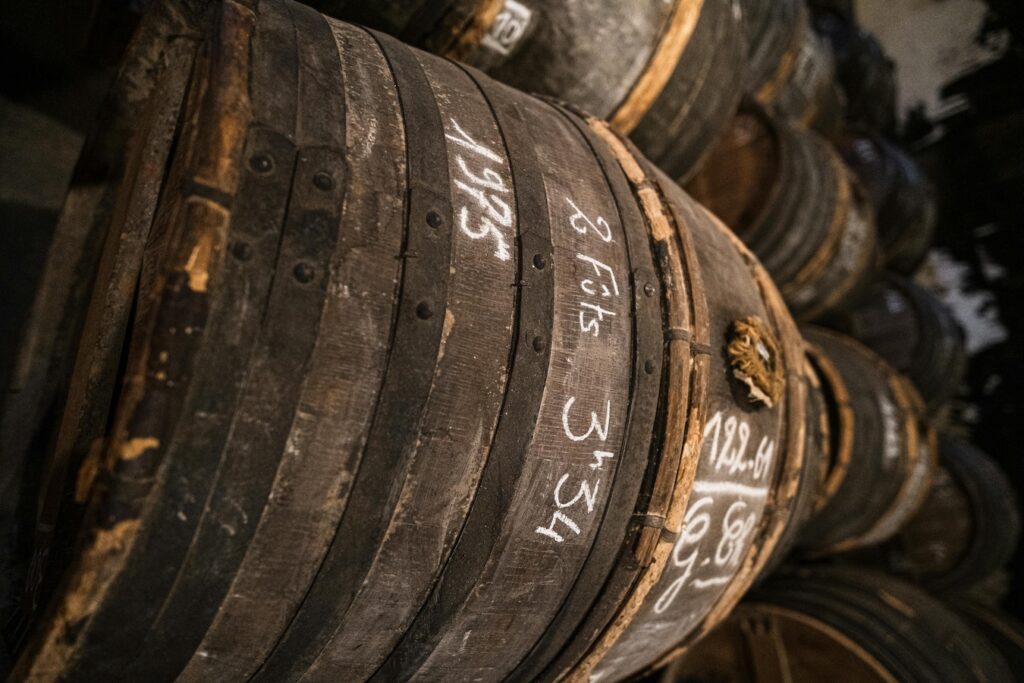Whenever a character in classic English mysteries faces the risk of fainting, someone inevitably suggests a few drops of brandy to revive them. Without fail, it works, and there’s never a suggestion of any other spirit. The brandy in question is almost always cognac—a drink so revered that it has earned the poetic title eau-de-vie, or “water of life,” despite containing less vitality than an Egyptian mummy.
A Spirit Born from Chalk and Grape
For geologists who appreciate fine spirits, cognac is often referred to as “brandy from chalk.” This nickname nods to the unique soil conditions of the Charente and Charente-Maritime regions, as well as smaller areas like Deux-Sèvres and Dordogne, where the grapes for cognac are grown. The region’s chalky soil forces grapevines to dig deep for water, creating wines with distinct character—a trait that becomes the hallmark of exceptional cognac.
Interestingly, the less palatable the base wine, the finer the resulting cognac. This paradox highlights the importance of the Ugni Blanc grape, which has been the dominant variety for over a century. Known as Trebbiano Toscano in Italy, Ugni Blanc produces acidic wines with low alcohol content (7–10%). This natural acidity means the wine doesn’t require sulfur dioxide for preservation, a key advantage since sulfur-treated wine is prohibited in cognac production.
The Art of Distillation
Cognac’s journey begins in an alembic charentais, a copper pot still first described in 1710 and initially engineered by Dutch craftsmen. Copper is critical to the process, neutralizing sulfur compounds and fatty acids that would otherwise spoil the spirit. The pot still’s lower chamber is heated by an open flame, while the upper section channels alcohol vapors into a condenser, where they transform back into liquid.
The process involves two distillations. The first produces a crude spirit called brouillis with 26–32% alcohol. The second distillation refines this into eau-de-vie, a clear distillate carrying the essence of future cognac. By law, this spirit must age for at least 30 months in oak barrels before it can be blended and bottled.

Oak Barrels: The Secret Ingredient
After distillation, the eau-de-vie is aged in oak barrels, where physical and chemical reactions between the spirit and the wood occur. Oak contains two key compounds: tannins, responsible for color and woody notes, and lignins, which give cognac its signature vanilla aroma. Barrels from the Tronçais forest are preferred for short aging periods due to their higher lignin content, while Limousin oak, with its higher tannin levels, is ideal for long-aged cognacs.
The Mastery of Blending
Cognac houses like Courvoisier, Hennessy, Martell, Rémy Martin, and others rely on cellar masters to craft blends that define their signature styles. For example, Rémy Martin exclusively uses cognacs from the Grande and Petite Champagne regions, while Martell focuses on eaux-de-vie from the Borderies area, prized for its clean and dry flavor profile.
Some producers enhance their blends with permissible additives, such as caramel for color, oak chips for woody accents, or even a touch of prune juice for depth.
Decoding Cognac Labels
While French law prohibits displaying the exact age of a cognac on its label, age categories like VS, VSOP, and XO indicate the youngest component in a blend. Cognacs must age for at least 30 months before release, with older blends offering more complexity and refinement.
Serving Cognac: Tips for Optimal Enjoyment
Cognac is traditionally served in tulip-shaped glasses or brandy snifters, but modern sommeliers often prefer copitas, which concentrate aromas. The ideal serving temperature is between 64–74°F (18–23.5°C). Avoid warming the glass excessively, as this can cause delicate aromas to dissipate.
Rare or aged cognacs should never be served with ice or mixers. For younger cognacs, serving them on the rocks is increasingly popular, particularly among younger audiences.
Storing Cognac: Protect the Spirit
Cognac bottles should always be stored upright to prevent contact with the cork, which could impart undesirable flavors. Keep bottles in a cool, dark place, away from sunlight and extreme temperatures. Once opened, cognac remains drinkable for years, but it’s best consumed while still fresh. In fine dining establishments, cognac from partially empty bottles is sometimes sold at a discount to ensure optimal quality.





